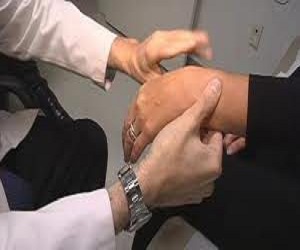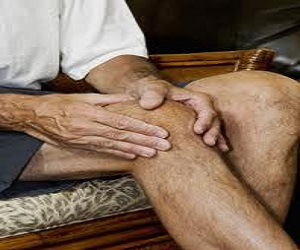The term arthritis literally means inflammation of a joint, but is commonly used to describe any condition in which there is damage to the cartilage. Hip arthritis is a major problem for many people; it arises as a result of deterioration, whether normal or accelerated, by rheumatoid arthritis, trauma, or joint collapse caused by a fault of blood supply to the femoral head (the ball of the joint).
 The hip is made up of a ball and a socket that is resistant to wear. Joint surfaces are covered with a smooth layer of cartilage, which functions as a shock absorber together with the normal joint lubrication provided by the joint lining. As a result, they provide a smooth low friction surface. This surface cartilage however, has a limited capacity to heal itself. As it wears away, bone is exposed. Once the bone surfaces get in contact, they cause pain while the cartilage has no sensation. The inflammation caused by the wreckage of joint wear, causes pain and stiffness, and leads to a new bone reaction of loss of motion. When this happens, hip joint replacement is sometimes needed. This is most common with advancing age; however, there may be cases where one may be subject to early or accelerated wear that requires earlier replacement surgery.
The hip is made up of a ball and a socket that is resistant to wear. Joint surfaces are covered with a smooth layer of cartilage, which functions as a shock absorber together with the normal joint lubrication provided by the joint lining. As a result, they provide a smooth low friction surface. This surface cartilage however, has a limited capacity to heal itself. As it wears away, bone is exposed. Once the bone surfaces get in contact, they cause pain while the cartilage has no sensation. The inflammation caused by the wreckage of joint wear, causes pain and stiffness, and leads to a new bone reaction of loss of motion. When this happens, hip joint replacement is sometimes needed. This is most common with advancing age; however, there may be cases where one may be subject to early or accelerated wear that requires earlier replacement surgery.
Symptoms
Hip arthritis symptoms generally start slightly. Walking tolerance diminishes over many years to the point where one or two blocks of walking would require resting. The pain of hip arthritis is increased by activity and cold damp weather. The arthritic hip loses range of motion slowly especially rotation. Climbing or descending stairs or arising from a chair is especially painful, activities of daily living becomes difficult.
Diagnosis
Diagnosis is usually simple. Arthritis can be easily seen on plain X-rays. Hip motion is generally limited and painful, and the pain is often in the groin or radiates into the thigh or even to the knee. In cases where the x-ray and physical exam does not match the pain complaints, other tests may be done, such as MRI, bone, scan, or joint injection test to limit on the cause and source of the pain.
Surgery
Replacing the worn joint through surgery is usually performed on both the ball and the cup of the hip except in cases where there is a fracture present. Generally, the cup of the hip is replaced with a metal shell which is rough on it's outer surface and encourages bone ingrowths. The femoral stem is cemented into the marrow canal of the femoral shaft, pressing on to this a metal ball with a hard plastic liner locked into the metal cup, forming a stable joint that can be walked upon right away.
A patient who would undergo total hip replacement should be ideally greater than sixty years old and with good health. There should be no history of prior hip infection, because any chronic or recurrent infection elsewhere may lead to late prosthetic infection.
Treatment of hip arthritis should begin with the most basic steps, like weight loss, activity modification, walking aids, physical therapy, anti-inflammatory medications and joint supplements. Treatments of hip arthritis vary from patient to patient, and that is why discussion about proper treatments with your doctor is always required.






